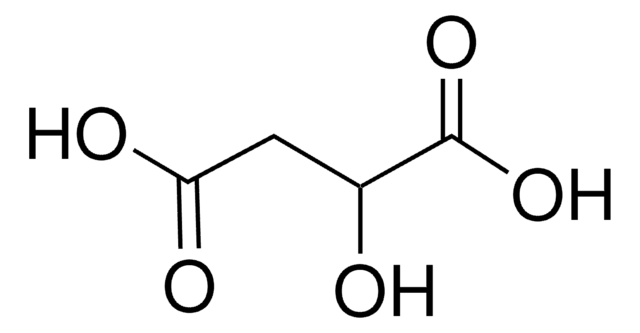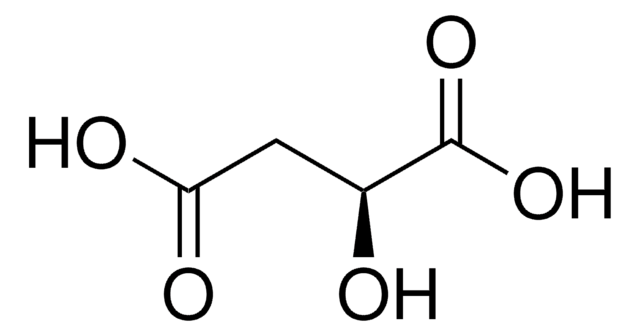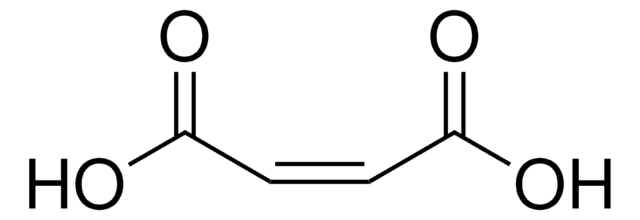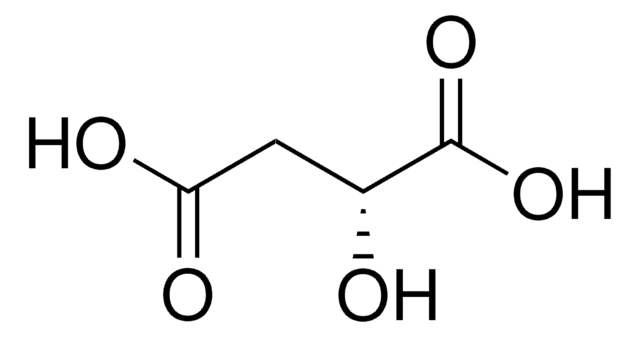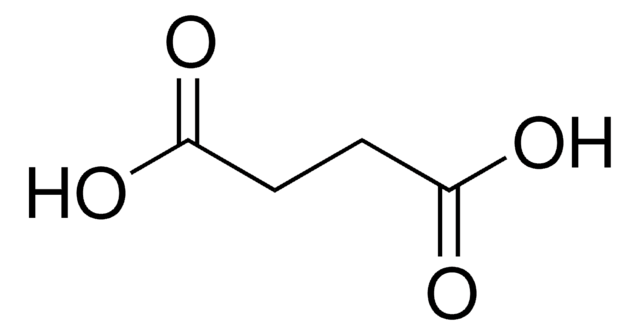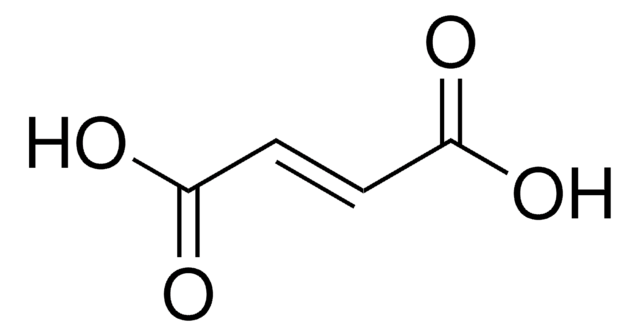240176
DL-Malic acid
ReagentPlus®, ≥99%
Synonym(s):
(±)-2-Hydroxysuccinic acid, DL-Hydroxybutanedioic acid
About This Item
Recommended Products
vapor density
4.6 (vs air)
Quality Level
vapor pressure
<0.1 mmHg ( 20 °C)
product line
ReagentPlus®
assay
≥99%
form
solid
autoignition temp.
644 °F
mp
131-133 °C (lit.)
solubility
acetone: soluble 17.75g/100g at 20 °C(lit.)
diethyl ether: soluble 0.84g/100g at 20 °C(lit.)
dioxane: soluble 22.7 g/100g at 20 °C(lit.)
ethanol: soluble 45.53g/100g at 20 °C(lit.)
methanol: soluble 82.7 g/100g at 20 °C(lit.)
water: soluble 55.8g/100g at 20 °C(lit.)
benzene: insoluble(lit.)
SMILES string
OC(CC(O)=O)C(O)=O
InChI
1S/C4H6O5/c5-2(4(8)9)1-3(6)7/h2,5H,1H2,(H,6,7)(H,8,9)
InChI key
BJEPYKJPYRNKOW-UHFFFAOYSA-N
Looking for similar products? Visit Product Comparison Guide
Related Categories
General description
Application
- As a dopant in the ammonium dihydrogen phosphate (ADP) crystal to improve the properties of ADP crystals.
- To form a water-soluble complex, Nb-MA which can further react with LiCl to form lithium niobate (LiNbO3) powders.
- As a monomer to synthesize a co-polymer, poly(DL-lactic acid-co-α,β-malic acid) (PLMA) with DL-lactic acid which can be coated over magnetic Fe3O4 nanoparticles after functionalizing with fluorescein isothiocyanate (FITC), to be used as a MRI T2-contrast agent.
Legal Information
signalword
Warning
hcodes
Hazard Classifications
Eye Irrit. 2
Storage Class
11 - Combustible Solids
wgk_germany
WGK 1
flash_point_f
397.4 °F
flash_point_c
203 °C
ppe
dust mask type N95 (US), Eyeshields, Gloves
Certificates of Analysis (COA)
Search for Certificates of Analysis (COA) by entering the products Lot/Batch Number. Lot and Batch Numbers can be found on a product’s label following the words ‘Lot’ or ‘Batch’.
Already Own This Product?
Find documentation for the products that you have recently purchased in the Document Library.
Customers Also Viewed
Our team of scientists has experience in all areas of research including Life Science, Material Science, Chemical Synthesis, Chromatography, Analytical and many others.
Contact Technical Service